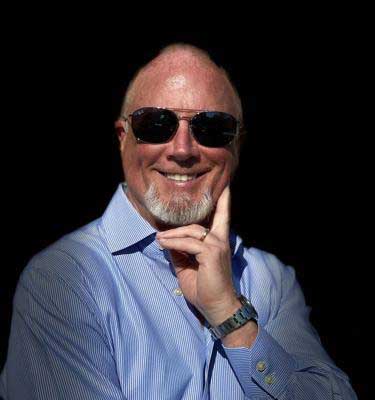Voice of the Customer? Huh?
Improvement and Innovation
Over my thirty-seven years as a change consultant, I worked on a lot of improvement and Innovation projects. These are similar but different methodologies.
The people who work on these methodologies tend to focus on the differences. Improvement often makes an existing product or process better, whereas innovation tends to invent new products and processes. Sometimes where there are both improvement and innovation teams in the same organization the competition can get a little nasty.
“You improvement people are rearranging the deck chairs on the Titanic.”
Oh yeah, innovation people? You focus on where the rubber meets the sky and have no results.”
Innovation and Improvement are both necessary for a healthy business and they are more similar than different.
Both improvement and innovation processes are disciplined problem solving processes. Both combine divergent thinking techniques (e.g., brainstorming) to generate ideas and detailed evaluation and planning to implement and integrate the changes.
One of the concepts both innovation and improvement are supposed to have in common is that they are designing or revising products and processes with the user or customer in mind.
In most continuous improvement methodologies this is called “Voice of the Customer.” In innovation circles there are whole methodologies built around this concept. “User-Centered Design,” which came from the software development industry was created to bring the user into the process earlier than what was traditional software “change management,” which was a half-day user training program.
Human-Centered Design (HCD) built on the functional needs of User-Centered Design or User Experience (UX) to add more psychological and emotional needs. HCD practitioners often use a wider lens and talk about benefits to society or humanity. HCD is often the innovation methodology of choice for Lifestyle products and services including social services.
I saw several problems at clients trying to make change:
- Innovate or improve? Indecision and conflict about whether to use innovation or improvement methodologies. This is a matter of the life-cycle of the product or process and the degree of change needed. At the beginning of the life-cycle improve it. At the end, or if major change is needed innovate.
- Methodology bingo – regardless of the whether they chose to improve or innovate, when the going got tough someone would say “What we need to do is – Lean, or Agile of HCD. Because I worked with so many different clients over so many years, I became methodology agnostic. I used to tell clients just pick one and stick to it.
- What Customer? One of the biggest problems I saw was internal focus caused by immersion in these methodologies, the lack of any disciplined focus on the customer, the end user or often even the internal recipient of the process.
Sometimes there would be a survey about previous products or services. Sometimes this would be treated reverently; sometimes not. I saw a project manager throw the marketing survey on a desk saying
“Yeah, yeah. The dogs don’t like the dog food. Funny how they keep eating it.”
Voice of the Customer Failures
Recently I had some experiences that drove home this lack of the voice of the customer in the design process.
Lefties (not political)
My wife does most of the cooking in our house. Oh, I cook a couple nights a week, sometimes I cook “enough for the Army” and we eat another night of my leftovers. Billie is one of the ten percent of all people in the world who is left-handed. Over the years she has acquired a saucepan with the spout on the right and a slotted spatula that slants in to the right. Sometimes I inadvertently pick one of these implements up.
“This [saucepan or spatula] is really awkward,” I whine.
“Welcome to my world,” Billie snipes back, “I have been cooking for over fifty years and I have very few left handed kitchen tools. You pick one of them up and complain.”
Ninety percent of the people in the world are right handed, either because they really are or they were “encouraged” to be. (They tied my father’s left hand behind his back until he was five.) Ten percent of the world or about eight hundred million people are left handed, thirty-three million in the United States. You’d think that would be a big enough market for someone to make a few left-handed kitchen tools.
A friend, a guitarist, complains about finding left-handed guitars. “Just restring it,” a sales clerk told him. Of course, that’s ridiculous because the nut and the saddle are cut for strings in the order of a right-handed guitar. Even if you did that the intonation would be wrong because the saddle is often slanted to make up for differential tension on the strings..
We righties are clueless about the difficulty of being a lefty living in a righty world.
I think product designers design products for themselves and assume that everyone else is like them.
“That’s a child-proof cap.”
Right, except when the arthritis in MY HANDS keeps me from opening the bottle of extra strength arthritis medicine, and I hand it to my four-year-old granddaughter to open as I have done more than once.
What really inspired this post:
I just purchased hearing aids. Rock-and-roll finally caught up to me. I have lost high registers in both ears. The right is worse than the left. It’s too late for my children, but I tell my grandchildren, “Don’t stand in front of speakers that are taller than you are.
Let me say I love this product. I can hear my granddaughters when they mumble, our TV is set at a significantly lower volume, and Bille tells me I say “What?” less when she holds a conversation with me from her office down the hall.
It took a while to learn the Smart Phone app and I still haven’t figured out how to have my Bluetooth car connection not be overridden by the hearing aid connection.
The manual says to “turn the hearing aids off when not wearing them and when they are not in the charger. Put them in the case to go swimming, for example, turn them off, but when you put them in the charger turn them on or they won’t charge. Turning them off a few hours a week will extend battery life.”
There is a rocker switch on the back of the piece that goes behind my ear.
My audiologist demonstrated.
“When you turn it off it plays this little electronic tune.. . . When you turn it back on it plays this tune. Hear the difference?”
“No. . . . in fact I can’t hear either tune.”
“Oh . . . of course you can’t. well maybe I can figure out how to lower the tone to the range you can hear unassisted.”
“OK, but If you were the genius who designed these, don’t you think a small LED bulb would have been a better off / on indicator than those high frequency tunes. I mean these are hearing aids, right?”
“Yes, I suppose so.”
These are all tone-deaf product designs (pun intended). I’m sure it is easy to imagine service designs that fail just as completely, like calling when the Internet is down and being told by the phone tree to “visit our website for faster service.”
What to do?
It just isn’t that hard to get the voice of the customer into product or service design or into improvements or innovations.
- First you have to believe that the customer’s opinion is important. So no more comments about the dogs and the dogfood.
- Next ask them.
- If you have surveys already -read them. If not conduct surveys, or
- Focus groups, or
- Customer interviews.
- Integrate the Voice of the Customer into design
- Have some customers evaluate and test whether you got it right.
For Clarity, I am talking about end users, and Internal customers who receive the output of the process you might be improving. There should be a straight through line from all inputs to the final customer.
Fine, but what if providing everything every customer asks for is too expensive? This is a real world concern. Make sure you have their highest priority needs and maybe tell those who gave you the feedback the reasons you won’t get to that right now.
The point is improvements and innovations are for the customer. Let’s make sure the customer’s voice is heard.
The post Voice of the Customer? Huh? appeared first on Wisdom from Unusual Places.
Originally Published on https://wisdomfromunusualplaces.com/blog/


























